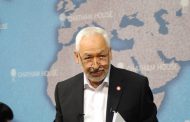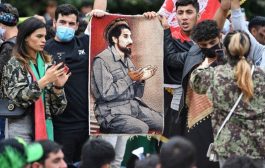Ghada Abdelrehim
We return to you with eagerness to complete what we started together in talking about the world of music. We previously presented ten episodes in which we started with introducing the field of music therapy, then we dealt with the history of music therapy and made it clear that like any science, it started with myth and then moved to the stage of science. It is the story of man with various natural phenomena, and his social, psychological and physical life, as we talked about the use of music for the health, happiness and comfort of man. We emphasized that it is not only a recreational thing, nor is it confined to the field of philosophy or worship, but has been used to influence the mental, emotional, physical and involuntary movements. It is the language of feelings and emotions, changing feelings and emotions in all their forms, whether fun or sad, quiet or violent, motivating calm and contemplation, or motivating enthusiasm and revolution.
Music and therapy are companions, and they have not separated during the ages of human history. Music therapy is one of the oldest therapeutic methods, so it has been used since ancient times in a primitive way. Then it developed to what it has reached in our era, based on studies and experiences that accept further development. Then we continued to talk about the power and ability of music to express the emotions of the human soul, and that it is a non-verbal communication. “When the ability to speak stops, music emerges.” We concluded our conversation in the previous episodes with the findings of experts from knowing the effect of different musical instruments on movement functions in the body, as well as the effect of musical forms and lyricism aiming to achieve the same goal. In this episode, we continue to discuss the effects of music on humans.
Effect of music on brain activation
Professor Charles Behrend in Hamburg, Germany is the first doctor to use music to stimulate the brain. His efforts in this field have so far been met with great success.
In the field of brain activation, Pribram has demonstrated in his experiments the occurrence of electrical responses in the skin as a result of increased blood flow to the head, and other experiments have demonstrated the occurrence of wakefulness as a result of the electrical activity of the parts of the brain connected to the inner ear… all due to music.
The experiments of Mikal Magendriof and Vera Polyakova also demonstrated that the motor reaction time decreased by two thousandths of a second, and physical functions and memory improved by about one hundred percent.
Music in the treatment of Parkinson’s disease
This type of treatment included the patient’s exposure to a series of sound effects of varying speed and volume with varying degrees of tremor, and it was possible to control the intensity, speed and stability of tremors by means of sound and visual effects.
In a later report, researchers indicated that different music has different effects on the speed of tremors. Quiet, slow music reduces the speed of tremors to the lowest degree – about 65 per minute – while violent march music increases the speed of tremors until it reaches 100 per minute.
Music in surgical procedures
The Italian surgeon Dr. Gatonozabella performed 3,000 surgeries in which he used local anesthetic and soft, calm music to calm the psychological state of patients during surgery.
Other areas of uses for music
1- Music and production at work
The use of music in work is not something new, as people have used it since ancient times in their work. Perhaps the most prominent example of this fact, which was previously discussed, is the use of songs and melodies by construction workers, sailors, and others during work. This kind of song was not only part of the rituals, but it was used by the workers to express their feelings about their work and their superiors. Let us consider in particular some of the songs of the African-Americans in the days of slavery. In many cases, the singing was to vent the feeling of oppression and subjugation.
Moreover, music is also used during fishing to gather fish when hearing the music, which helps fishermen to catch larger quantities of fish, as is happening now in Egypt’s Lake Qarun and other fishing places.
Talking about the impact of music on work and production requires noting two types of experiences and expertise on this subject.
(a) The use of music for work and production requires the observation of two kinds of experiences and expertise on the subject.
(b) Bringing music into the workplace itself and during production.
Because the morale of the worker is one of the most important reasons for acquiring efficiency and increasing his production, and just as increasing industrial efficiency is the main goal of using music during work periods, experiments on the subtleties of this topic do not stop. Perhaps the English experiences in this field have received the most light in this regard.
The most important experiences of the influence of music on work:
1- Industrial psychologists have previously stated that boredom in some types of work reaches its peak around the middle of the work period.
This boredom appears in the form of anxious behavior and leads to a decrease in the rate of production. Proceeding from this fact, Wyatt and Langdon in England conducted a study that is considered a pioneer in this field due to its comprehensive empirical nature.
This study revealed that workers automatically resist boredom by singing, talking and various other activities. When records were played on a phonograph, production increased by 2.6% to 6%. Although the average showed a significant improvement in music, people differed in their reactions to it. The majority of workers benefited, but a number of them were affected little or not at all. These results are in agreement with other dispersal tests.
The clearest explanation for this is that music affects those associated with boring and largely manual actions that require little concentration after a person learns it, whereas if a person is engaged in solving a complex engineering problem, the sounds may be distracting.
Wyatt and Langdon added that the good effects begin to decline when the music is overdone (i.e. for all or most of the work time). This seems especially clear to women – as we have already mentioned in the first chapter – and especially to those who do work that causes boredom.
Also, these studies have proven that the quality of music has an impact on the increase or decrease in production, and not just the worker’s preference for it.
2- In a study of students training in mechanical education and repair affiliated to a school in the Signal Corps, Kerr found that the effect of music on workers is embodied in the following facts:
* Good feeling towards colleagues.
* Helps them forget their fatigue.
* Helps them perform heavy duty tasks.
* Helps them forget their worries.
3- In another series of experiments conducted on students, it was proven that different types of music cause changes not only in working capacity, but also in the circulatory system and pulse. The worker’s ability was at its strongest during a rapid pulse and higher blood pressure than normal pressure due to the fast fun music. Also, the pulse and blood pressure returned to normal when accompanied by cheerful music, and returned to normal with calm music.
Melodious Jerusalem tune
Here, our episode ends, but before we leave, we would like to assure you that music and singing are two weapons that are no less important than military weapons. Through music, you can express yourself, present your case, and communicate your voice to the fullest extent. There is no greater evidence of this music with which we are attached, through which the Rahbani Brothers were able to express all our feelings towards Palestine and Jerusalem when their tunes met with the great voice of Fayrouz. We may note in the recent period, after the globalization of media and the spread of satellite channels, that the talented Palestinians began to use music as an expression of identity and a tool for influence, and they succeeded in using it as a tool of struggle in the service of a just cause.
For you, city of prayer, I pray
For you, the beauty of the dwellings, the flower of cities
O Jerusalem, O city of prayer, I pray
Our eyes go to you every day
Rotating in the corridors of temples
Hugging old churches
And wiping the sadness from the mosques
The house is ours and Jerusalem is ours
With our hands, we will restore the glory of Jerusalem
In our hands, to Jerusalem, peace is coming





































admin in: How the Muslim Brotherhood betrayed Saudi Arabia?
Great article with insight ...
https://www.viagrapascherfr.com/achat-sildenafil-pfizer-tarif/ in: Cross-region cooperation between anti-terrorism agencies needed
Hello there, just became aware of your blog through Google, and found ...